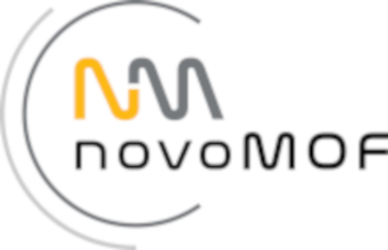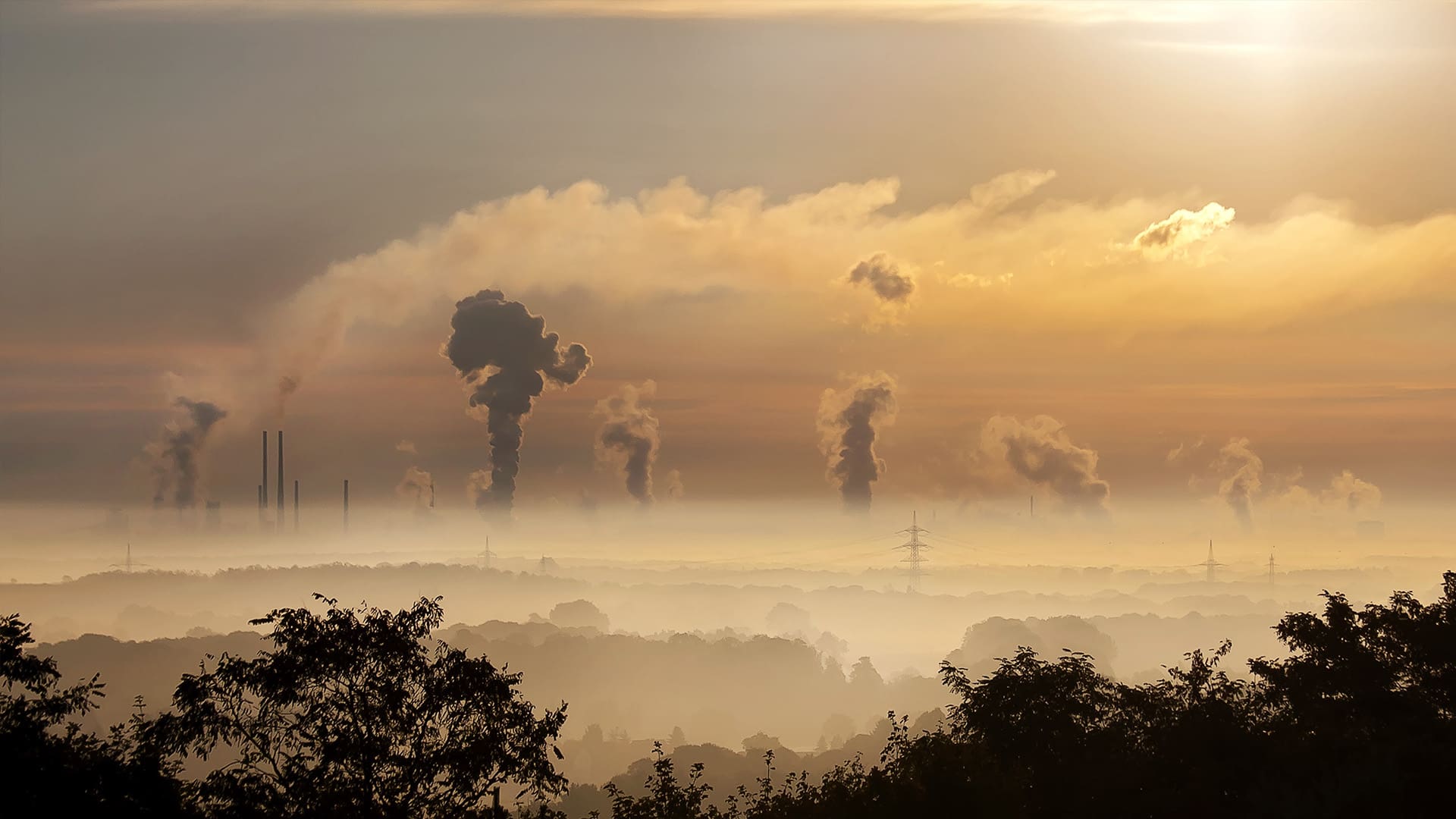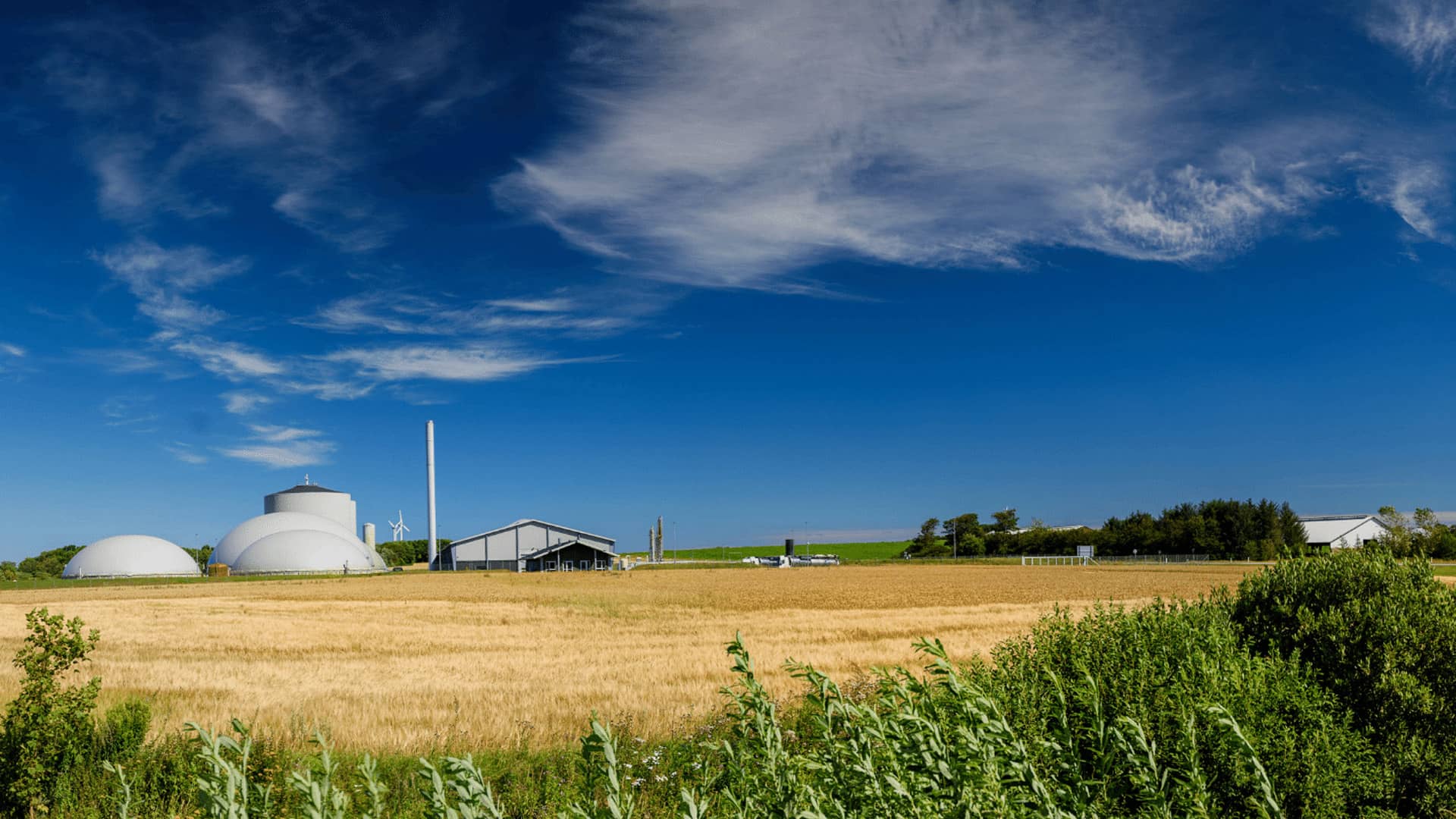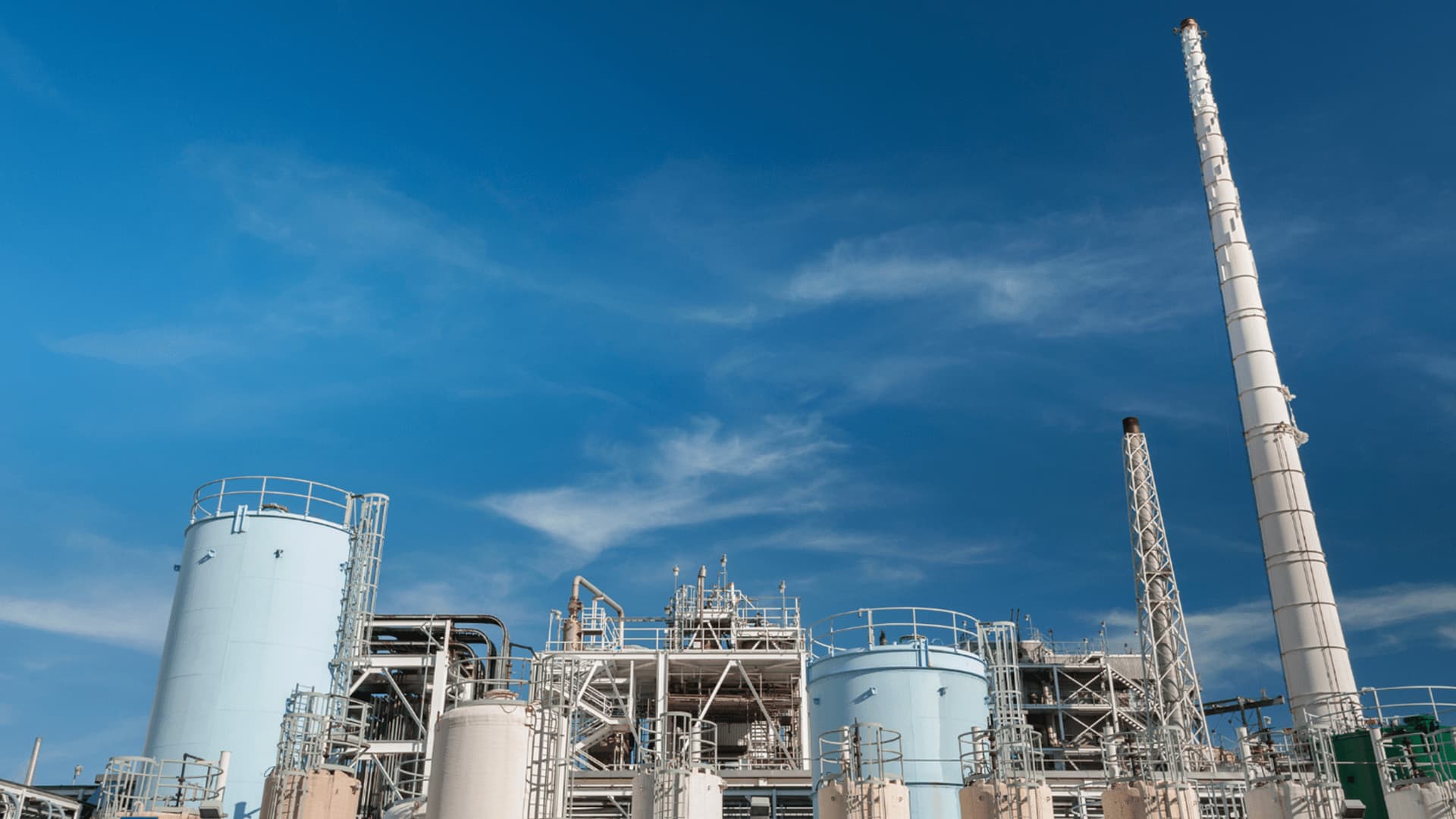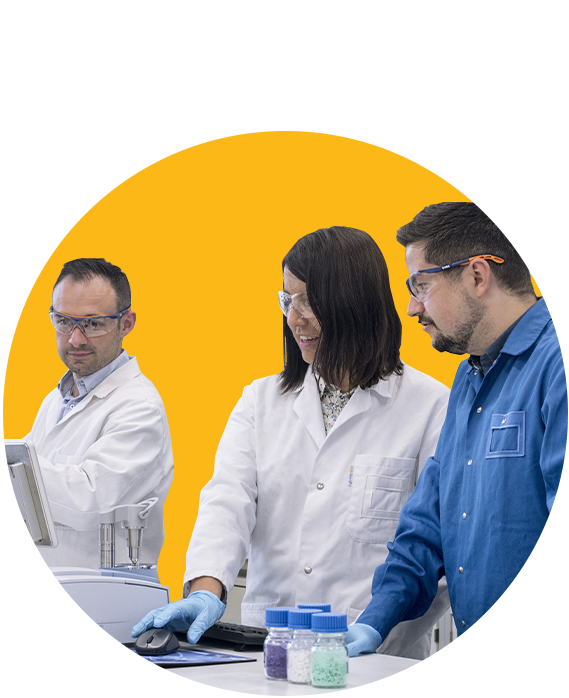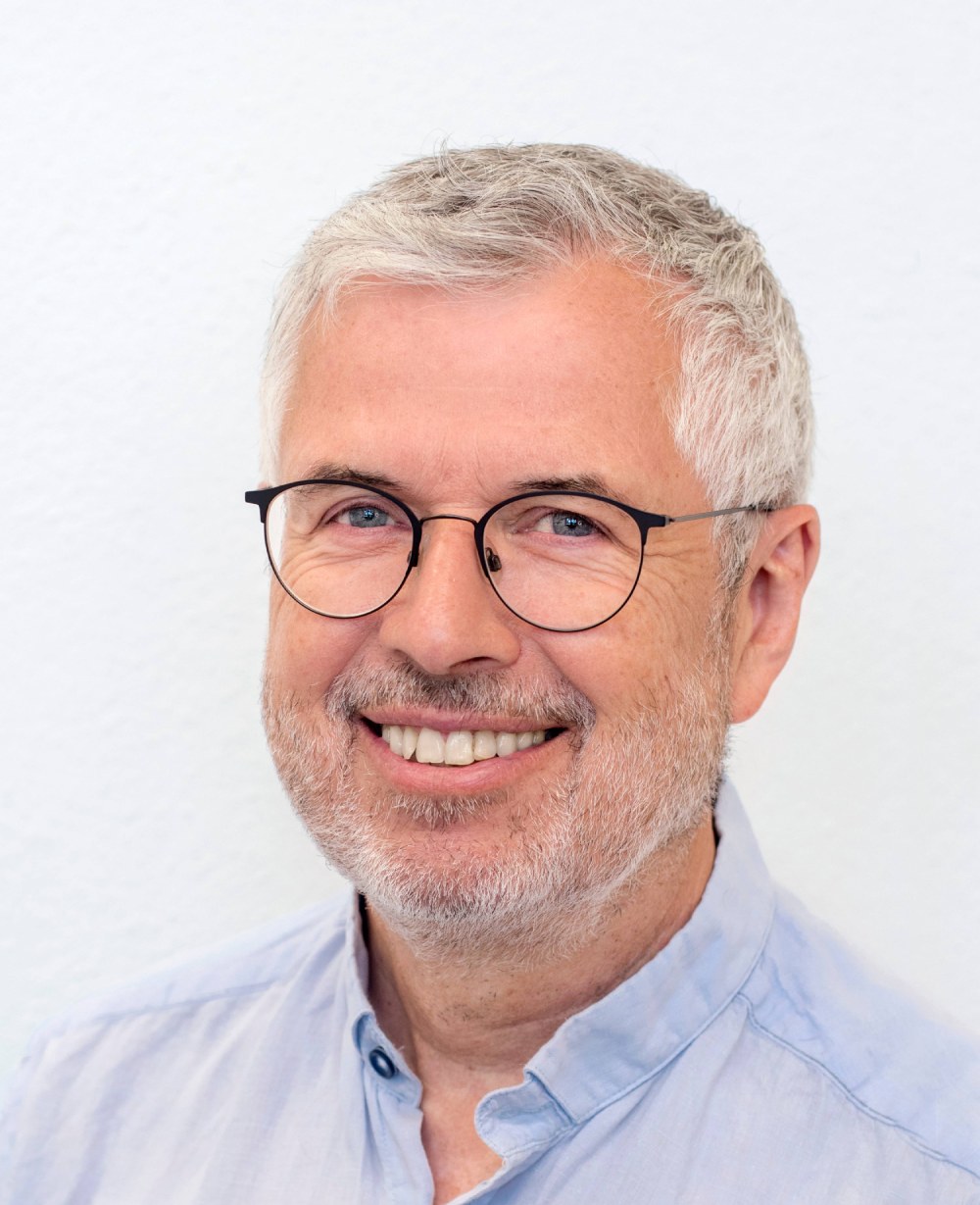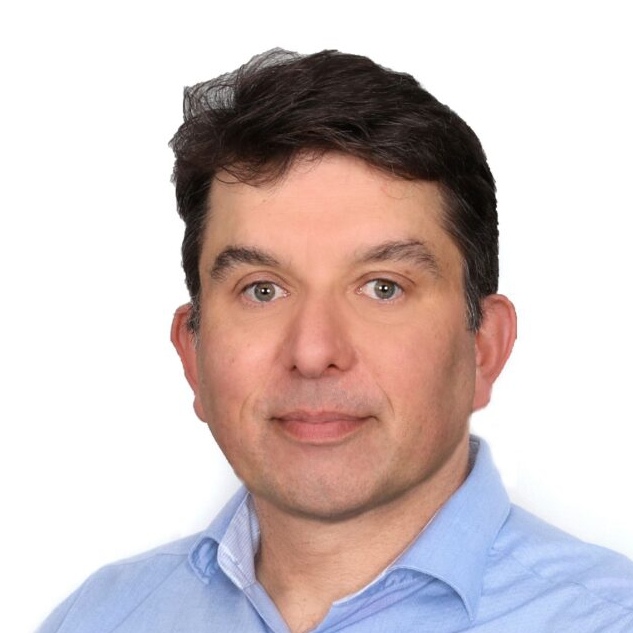
Driving success through
MOF innovation
LEARN MORE
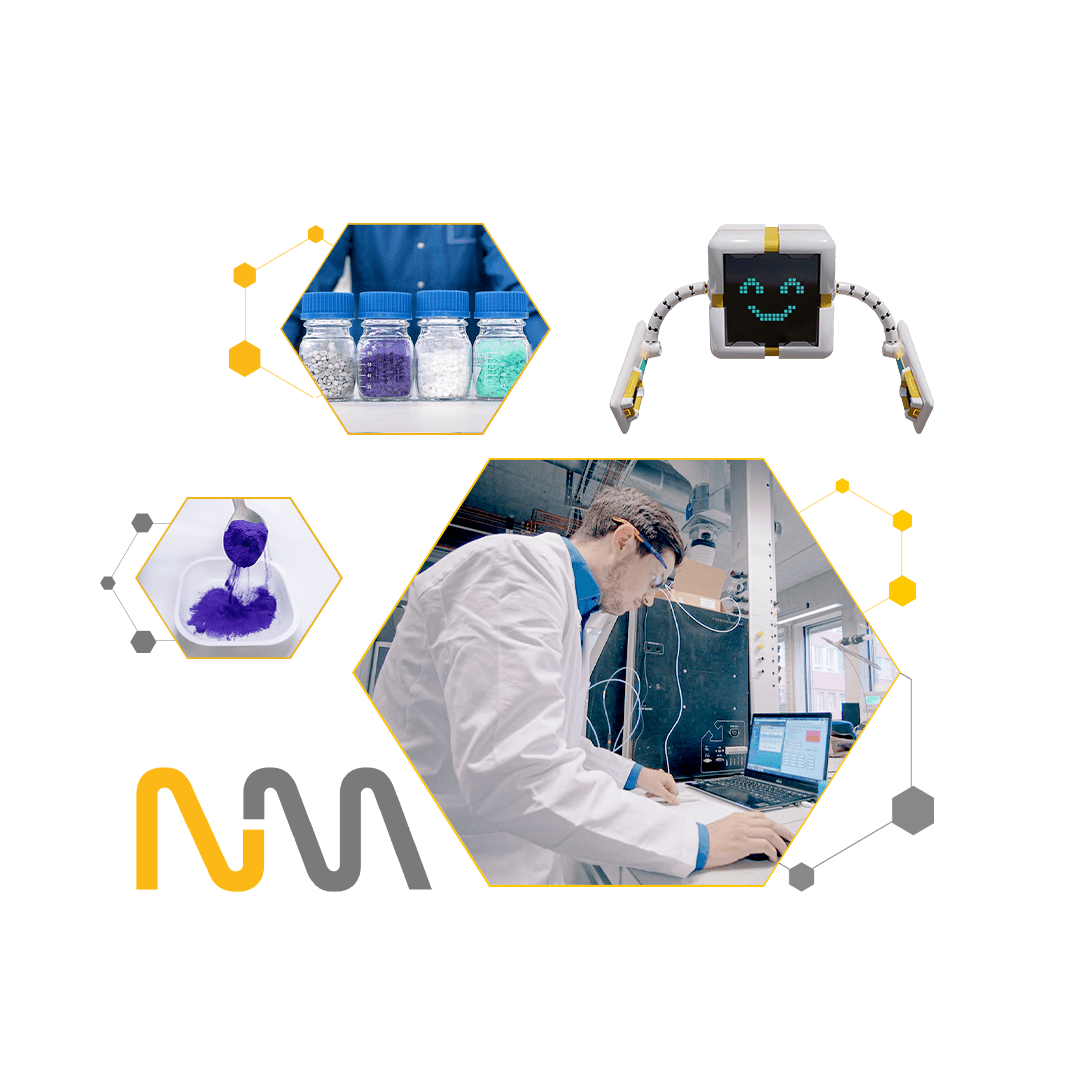
ABOUT US
Your strategic partner for innovative
MOF-based solutions
novoMOF focuses on the development, the production and the commercialization of metal-organic frameworks (MOFs). These highly porous adsorbents offer competitive solutions to global problems such as carbon capture, water scarcity, and food waste.
OUR TECHNOLOGY
Solution Process
1
SELECTION

Your business challenges drive us in the identification of the right MOFs.
2
SYNTHESIS

You receive synthesized MOFs at the highest quality.
You can test them for your application.
3
OPTIMIZATION

You benefit from support in optimizing the performance of your process.
4
PRODUCTION

You leverage your commercial application with us, your trusted supply partner.
We scale production according to your needs from grams to tons.
WHY US
VALUE-FOCUSED
HIGH-QUALITY
EXPERTISE
SCALABLE
INNOVATIVE
Network
TESTIMONIALS
In our syngas conversion development efforts at Dow we have been investigating MOFs as catalyst precursors. In order to evaluate and compare our internal …

Matthijs Ruitenbeek
– Senior R&D Manager The Dow Chemical Company
As the chief scientific officer, I am always scouting for new technology platforms to improve our products at Silent-Power AG. I’ve met novoMOF at a conference in …

Dr. Reto Holzner
– Chief Scientific Officer econimo DRIVE
I had the opportunity to work with novoMOF AG on the scale up of one of our MOFs. Their production of a high-quality MOF at kilogram scale,…
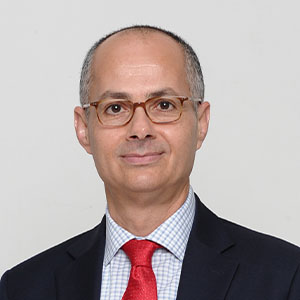
Dr. Omar M. Yaghi.
– Professor of Chemistry, UC Berkeley
novoMOF is a reliable partner for any organization seeking to scale up their metal-organic frameworks. As the principal investigator of our Atmospheric …

David R. Moore, Ph.D.
– GE Research Executive Manager, Carbon Capture Technology Leader
Recent Posts
novoMOF Blog Blog about Metal-Organic Frameworks (MOFs), their application and related industries.
- The sweet spot of MOFs for carbon captureon April 25, 2024 at 10:51 am
Whilst global energy needs increase year after year and the quest for sustainable energy solutions is more pressing than ever, carbon capture technologies have emerged as indispensable tools in the fight against climate change. Traditional methods for carbon capture such as amine scrubbing are effective but energy-intensive and costly. As an emerging technology platform, the utilization of Metal-Organic Frameworks (MOFs) presents a revolutionary approach with the potential to significantly impact emissions reduction across various industries. Carbon Capture Technologies Carbon capture can be categorized into three categories based on CO2 concentration: Direct Air Capture at 420 ppm or 0.04 vol.% CO2 Post-combustion capture ranging between 1-20 vol.% CO2 Highly concentrated CO2 sources (biogas upgrading, steel production, etc.) with >20 vol.% CO2 Finding the Sweet Spot for MOF-based Adsorption MOFs are crystalline materials consisting of metal ions or clusters connected by organic ligands, forming porous microstructures with high surface areas. MOFs present an attractive alternative due to their high selectivity, tunable pore structures, and low energy requirements for regeneration. The key to unlocking the full potential of MOFs for carbon capture lies in optimizing their properties to achieve the perfect balance between capacity, selectivity, and stability. Some strategies to tailor MOFs for enhanced CO2 adsorption include: Operational conditions for MOF-based systems vary depending on the specific application and the chosen adsorption process. MOFs have demonstrated effectiveness across a range of temperature, pressure, and CO2 concentration conditions. For instance, they have been successfully utilized in various adsorption processes such as Temperature Swing Adsorption (TSA), Pressure Swing Adsorption (PSA), Vacuum Pressure Swing Adsorption (VPSA), and Temperature and Vacuum Swing Adsorption (TVSA). The table below shows typical conditions used in the above adsorption methods: These processes allow for tailored adjustments in operating conditions to achieve optimal performance. It's essential to consider the suitability of MOFs across different processes and conditions to maximize their effectiveness in CO2 capture applications. Stability and Regeneration: Ensuring the long-term stability and recyclability of MOFs is crucial for practical applications. MOFs with robust frameworks can withstand harsh operating conditions, such as high temperatures and chemical exposure. Additionally, designing MOFs with facile regeneration pathways enables efficient desorption and regeneration, minimizing energy consumption and operational costs. Functionalization: Introducing functional groups into MOF structures can enhance affinity and selectivity towards CO2. Functionalization allows the chemical interactions between the MOF surface and other molecules to be fine-tuned, leading to enhanced adsorption properties. Common functional groups include amino, hydroxyl, and carboxyl groups, which can form strong interactions with CO2 via chemisorption or physisorption mechanisms. Pore Size Engineering: Controlling the size and geometry of pores within MOFs is crucial for maximizing carbon dioxide uptake. By precisely controlling the dimensions of the pores, researchers can optimize the adsorption capacity while minimizing diffusion limitations. Recent advancements in synthetic techniques have enabled the design of MOFs with tailored pore architectures, leading to significant improvements in carbon capture performance. Stability and Regeneration: Ensuring the long-term stability and recyclability of MOFs is crucial for practical applications. MOFs with robust frameworks can withstand harsh operating conditions, such as high temperatures and chemical exposure. Additionally, designing MOFs with facile regeneration pathways enables efficient desorption and regeneration, minimizing energy consumption and operational costs. Success Story of MOF-Based Adsorption Technology Recent academic and industrial research has demonstrated the ability of MOF-based adsorption technology to capture CO2 from low-to-moderate concentration sources ranging from 1% to 20%, making MOFs particularly well-suited for capturing carbon dioxide from flue gases emitted by industrial processes such as aluminium or cement production as well as the power generation industry. MOFs' selective adsorption properties allow for efficient capture of CO2 even in the presence of other gases, ensuring high purity of captured carbon dioxide for storage or utilization. This successful example of applying the unique tunable properties of MOFs to a specific range of CO2 concentrations demonstrates the potential of MOFs to rise to the challenges posed by our need to combat climate change and reduce carbon emissions. In addition to their efficient capture of CO2 from low-to-moderate concentration streams, with their unique properties and versatility, MOFs offer a promising solution for emissions reduction across various industries such as biogas upgrading, natural gas purification, and Direct Air Capture, among others. As we continue to innovate and refine these technologies, further sweet spot applications of MOFs for carbon capture will become increasingly evident, offering hope for a greener, more environmentally conscious future. Please visit our previous blogs to learn more about the other applications and advantages of MOFs.
- Carbon Utilization and Storageon February 6, 2024 at 7:58 pm
In the ongoing battle against climate change, the concept of carbon capture, utilization, and storage (CCUS) has emerged as a pivotal solution. Not only does it involve capturing carbon emissions, but it also presents a promising avenue for transforming this captured carbon into valuable resources. This transformative process holds the key to mitigating greenhouse gas emissions while fostering the creation of useful products essential for various industries. In this blog, you will find insights into what can be done once carbon is captured and how adsorption technology can be applied to different areas. Transportation and Storage: Enabling the Transformation Transporting captured carbon to the facilities where it undergoes transformation demands an efficient infrastructure. Once captured and separated, carbon dioxide transportation is crucial, but current methods pose economic challenges due to pressure losses. The consensus leans towards transporting significant CO2 volumes as a dense phase fluid, preferably in the supercritical state, as it offers energy-efficient conditions due to its gas-like viscosity and liquid-like density. The transport process is divided into onshore and offshore subsets, with options such as pipelines, ships, highways, and railroads for onshore and pipelines and ships for offshore, determined mainly by proximity to storage sites. The most technically developed transport methods are pipelines and transport ships, with road and rail transport being less preferred for large CCS projects. Pipelines are the primary mode of transport, ensuring the safe and efficient movement of captured carbon to locations where it can be processed into valuable products. The final storage step involves three main categories: geological, oceanic, and mineral storage. The most established approach involves underground storage by injecting carbon dioxide into suitable geological formations or specific reservoirs at particular depths. Various geological formations are typically assessed for CO2 storage, including depleted oil and natural gas reservoirs, underutilized oil and gas sites (such as enhanced oil recovery /CO2-EOR and enhanced gas recovery /CO2-EGR sites), deep coal deposits for enhanced coal bed methane (CO2-ECBM), and deep saline aquifers. These locations provide the necessary containment for long-term carbon sequestration; gas sites and saline formations are used commercially. Transforming Captured Carbon: From Burden to Valuables Captured carbon, often considered an environmental burden, can be repurposed into valuable products. For instance, carbon dioxide can be transformed into synthetic fuels, such as methane or methanol, offering a sustainable alternative to fossil fuels. Additionally, it serves as a key ingredient in manufacturing chemicals and polymers, pivotal in various industries like pharmaceuticals, plastics, and textiles. The ability to harness this waste and transform it into something beneficial marks a monumental shift in sustainability efforts. Some of the industries which can benefit from carbon transformation are: Energy Sector: Synthetic fuels derived from transformed carbon can revolutionize the energy sector, powering vehicles and industries without adding to carbon emissions. Manufacturing and Chemical Industries: Carbon-derived chemicals form the backbone of numerous manufacturing processes, from producing plastics to pharmaceuticals. Construction Materials: Transforming captured carbon into building materials like cement or aggregates provides sustainable alternatives, reducing the construction industry's carbon footprint. Agriculture and Food Production: Utilizing transformed carbon in agricultural processes, such as enhancing plant growth or creating sustainable fertilizers, could revolutionize food production. Carbon Transportation and Storage with MOFs Adsorption methods, particularly leveraging advanced materials like Metal-Organic Frameworks (MOFs), offer important features relevant to carbon transportation and storage downstream steps. MOFs possess a high surface area and customizable structures, making them ideal for selectively capturing CO2 from mixed gas streams. This capability is crucial in gas separation processes, allowing for the extraction of high-purity CO2 for transportation. Advantages of MOFs in Carbon Transportation and Storage: High Selectivity: MOFs exhibit high selectivity for CO2 molecules and possess impressive storage capacities due to their porous nature, making them efficient in capturing and retaining CO2 during transportation and storage. Tunable Properties: The customizable nature of MOFs enables adjustments in their structures to optimize performance for specific carbon capture, transportation, or storage conditions, enhancing their effectiveness. Versatile Applications: MOFs can be tailored to suit various carbon value chains, providing versatility in their applications across different carbon storage methods and transportation phases. Leveraging adsorption methods, especially with MOFs, presents a promising avenue in the carbon value chain from capture, transportation, storage, or utilization. Their remarkable properties and adaptability offer solutions that address efficiency and selectivity, contributing significantly to advancing carbon capture, utilization, and storage technologies. Contribution to a Circular Economy In conclusion, the significance of carbon utilization and storage extends beyond environmental benefits. It fosters a circular economy where waste is transformed into valuable resources, reducing the reliance on finite raw materials. Embracing these practices not only combats climate change but also drives innovation and economic growth. Integrating carbon capture, utilization, and storage into mainstream industries is critical to a sustainable future. As we continue to advance these technologies, we inch closer to a world where carbon emissions are no longer a liability but a resourceful asset in our pursuit of a greener, more prosperous planet. Please visit our previous blogs and success stories to learn more.
- How to achieve SDGs with MOFson November 20, 2023 at 4:02 pm
In a world where global challenges such as climate change, poverty, and inequality are ever-present, the United Nations' Sustainable Development Goals (SDGs) have emerged as a beacon of hope for a more sustainable and equitable future. Enacted in 2015 as part of the 2030 Agenda for Sustainable Development, the SDGs encompass a wide array of crucial global issues, ranging from eradicating poverty and hunger to fostering sustainable economic growth and combating climate change. Achieving these goals is not only the responsibility of governments but also of industries worldwide. In this blog, we will explore the role of one remarkable innovation, Metal-Organic Frameworks (MOFs), in helping industries contribute to the achievement of the SDGs. Achieving Sustainable Development Goals Five of the most interlinked Sustainable Development Goals are SDG 6 (Clean Water and Sanitation), SDG 7 (Affordable and Clean Energy), SDG 11 (Sustainable Cities and Communities), SDG 12 (Responsible Consumption and Production), and SDG 13 (Climate Action). These goals address critical global challenges, such as ensuring access to clean and safe water, transitioning to sustainable energy sources, promoting responsible consumption and production patterns, and mitigating the impacts of climate change. Industries play a central role in all these aspects. Carbon Capture and Storage (CCS): SDG 13 specifically calls for action to combat climate change and its impacts. This is where CCS comes into play. CCS technology involves capturing carbon dioxide (CO2) emissions from industrial processes and storing them safely to prevent their release into the atmosphere, thereby curbing global warming. Clean Energy: SDG 7 seeks to ensure affordable, reliable, sustainable, and modern energy for all. Achieving this goal is intrinsically linked with developing clean and renewable energy sources, which can significantly reduce carbon emissions, thus contributing to SDG 13. Clean Water Technologies: SDG 6 ensures water and sanitation availability and sustainable management. Industries are vital in developing innovative clean water technologies to enhance access to clean water and improve sanitation. Responsible Consumption and Production: SDG 12 promotes sustainable consumption and production patterns. Industries must reduce waste generation, implement sustainable practices, and minimize environmental impact. Sustainable Cities and Communities: SDG 11 focuses on creating inclusive, safe, sustainable cities and communities. Industries can contribute to this goal by adopting sustainable practices, reducing pollution, and promoting resource-efficient urbanization. MOFs: A Platform Technology MOFs, or Metal-Organic Frameworks, have emerged as a groundbreaking class of materials with a wide range of applications in various industries. MOFs are composed of metal ions or clusters linked by organic molecules, forming a porous, crystalline structure with an incredibly high surface area. This unique structure allows MOFs to exhibit exceptional characteristics, making them suitable for numerous purposes: MOFs in Carbon Capture and Storage: MOFs can efficiently capture and separate CO2 from industrial flue gases. MOFs' high surface area and tunable properties make them ideal for selectively adsorbing CO2 while allowing other gases to pass through. By employing MOFs, industries can reduce their carbon footprint, aiding the achievement of SDG 13. MOFs in Clean Energy: MOFs play a pivotal role in energy storage and conversion. They can be used for hydrogen storage, a critical component in clean fuel cell technology. Additionally, MOFs can serve as efficient catalysts for various energy conversion reactions, such as converting carbon dioxide into valuable products or storing renewable energy as hydrogen. MOFs in Clean Water Technologies: MOFs can also help address water-related SDGs. Their adsorption capabilities can be harnessed for water purification, heavy metal removal, and desalination. By utilizing MOFs, industries can contribute to SDG 6 by enhancing clean water access and sustainability. MOFs in Responsible Consumption and Production: MOFs can play a role in sustainable practices. They can be employed in processes that reduce waste generation, promote resource efficiency, and align with the principles of SDG 12. MOFs in Sustainable Cities and Communities: MOFs can support sustainable urbanization by aiding in pollution control, resource efficiency, and sustainable industrial practices, thus contributing to SDG 11. Utilizing MOFs for Industrial Impact MOFs' unique properties and versatility make them a valuable asset for industries striving to achieve the SDGs. Industries can integrate MOFs into their operations, particularly in sectors related to energy production, carbon-intensive processes, and clean water technologies. By doing so, they can reduce their environmental impact, drive innovation, and create economic opportunities aligned with the SDGs. SDG 9 (Industry, Innovation, and Infrastructure) underscores the significance of inclusive and sustainable industrialization for global development. MOFs, as a technology platform of highly-versatile materials, can significantly contribute to this goal. By enabling industries to innovate, reduce their environmental footprint, and foster sustainability, MOFs play a pivotal role in achieving SDG 9, which is crucial for the broader success of the Sustainable Development Goals. In conclusion, MOFs are a game-changing innovation with the potential to drive sustainable industrial practices, contributing to SDGs 6, 7, 11, 12, and 13. As industries harness the power of MOFs, they align with global sustainability targets and advance the cause of multiple SDGs, propelling us closer to a more sustainable world.
